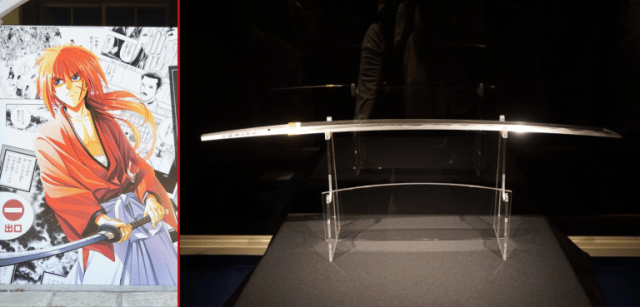
The sakabato’s journey brings it to Japan’s eastern capital, just like the anime swordsman’s did.
Himura Kenshin, protagonist of the Rurouni Kenshin anime/manga, famously wields a reverse-edged sword called a sakabato. The reason why is pretty easy to see from a storytelling perspective: Being unsharpened along the regular cutting edge for a katana lets Kenshin swing his sakabato with speed and strength in duels without drawing blood or killing his opponent. Having the inner edge sharpened, though, also provides a constant temptation to resort to deadly violence, and a means by which to show Kenshin’s honorable resolution in overcoming it as part of his path to redemption after years as a feared killer.
In real life 19th-century Japan, however, people in the market for a sword didn’t have the luxury of choosing a weapon that sacrificed sharpness in order to accentuate their troubled personal backstory, and so no real-world sakabato existed. Well, at least none existed until recently, when Japanese swordsmith Kanekuni Ogawa created one, called the Sakabato Shinuchi (meaning “Sakabato Truly Forged”)
▼ Kanekuni Ogawa
Based in the town of Seki, which has been known for its swordsmiths for centuries, Ogawa is so talented that he, personally, has been awarded the title of “important tangible cultural property” by the city. Upon the sword’s completion, it was exhibited in the Meijimura historical building park in Aichi Prefecture, in connection with Rurouni Kenshin being set in the Meiji period of Japanese history.
Now, though, just as the emperor of Japan moved from Kyoto to Tokyo in the Meiji period, so too is the Sakabato Shinuchi coming to the capital, where it will be displayed from April 24.
Even for those who’ve never read the manga or watched the anime (Ogawa himself had never seen either before taking on the project), the Sakabato Shinuchi is a striking piece, and has a singular beauty among Japanese swords. Because its blade is on the other side of where it would be on a normal katana, the real-life sakabato also has completely unique hamon (tempering marks), with the undulation being more prevalent along the inner curve of the flat.
▼ Sakabato Shinuchi, during its display at Meijimura
As is customary for swords in Japan, the Sakabato Shinuchi will be displayed without a handle. This is done because the nakago (the part of the hilt that extends into the handle) is where Japanese swordsmiths inscribe their names, though in the case of the Sakabato Shinuchi, Ogawa has instead carved the death poem of Arai Shakku, the smith who forged Kenshin’s sakabato in the anime, since that’s what’s on the nakago in the source material.
The sword will be displayed as part of the travelling Ruruni Kenshin Exhibition, celebrating the franchise’s 25th anniversary. The Tokyo exhibition will take place from April 24 to June 7 at Gallery AaMo, part of the Tokyo Dome City complex adjacent to Tokyo Dome, with tickets available online here.
Event information
Rurouni Kenshin Exhibition / るろうに剣心展
Venue: Gallery AaMo / ギャラリー アーモ
Address: Tokyo-to, Bunkyo-ku, Koraku 1-3-61
東京都文京区後楽1丁目3−61
Website
Source: Yahoo! Japan News/Oricon News via Otakomu, Rurouni Kenshin Exhibition website
Photos ©SoraNews24
● Want to hear about SoraNews24’s latest articles as soon as they’re published? Follow us on Facebook and Twitter!

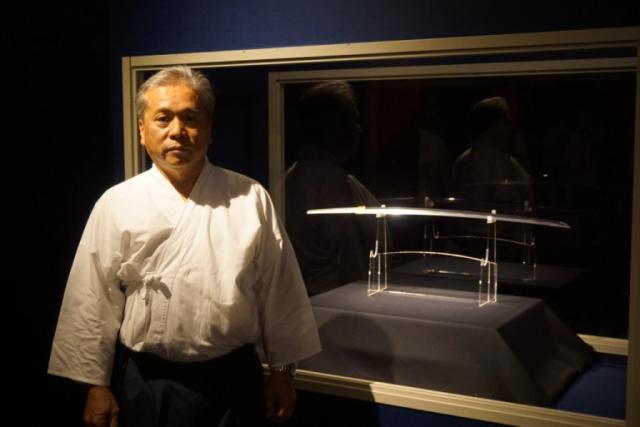
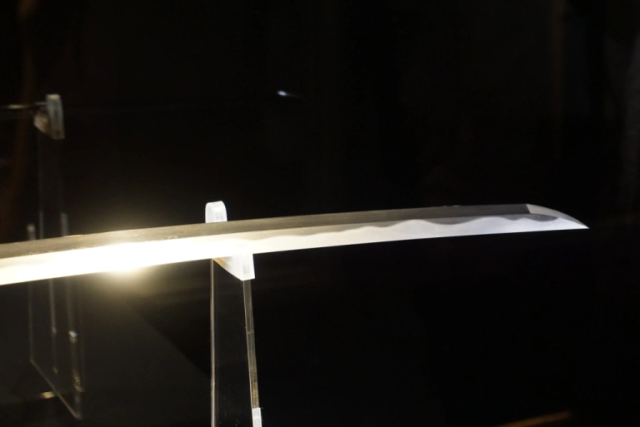
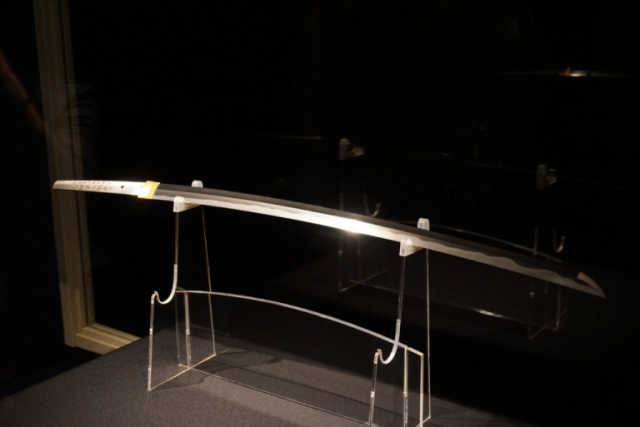

 Real-life Rurouni Kenshin reverse-blade katana, forged by master swordsmith, now on display【Pics】
Real-life Rurouni Kenshin reverse-blade katana, forged by master swordsmith, now on display【Pics】 Real-life Rurouni Kenshin reverse-blade katana now on display in Tokyo【Photos】
Real-life Rurouni Kenshin reverse-blade katana now on display in Tokyo【Photos】 Real-life Rurouni Kenshin katana forged based on sword of series’ most merciless villain【Photos】
Real-life Rurouni Kenshin katana forged based on sword of series’ most merciless villain【Photos】 Rurouni Kenshin comes to picture-perfect life as photos of stage musical’s cast are released
Rurouni Kenshin comes to picture-perfect life as photos of stage musical’s cast are released Swords of famous samurai reborn as beautiful kitchen knives from Japan’s number-one katana town
Swords of famous samurai reborn as beautiful kitchen knives from Japan’s number-one katana town Demon Slayer: Kimetsu no Yaiba gets new roller coaster attractions and food at Universal Studios Japan
Demon Slayer: Kimetsu no Yaiba gets new roller coaster attractions and food at Universal Studios Japan How to order snacks on a Shinkansen bullet train in Japan
How to order snacks on a Shinkansen bullet train in Japan Nintendo history you can feel – Super NES, N64, and GameCube controllers become capsule toys
Nintendo history you can feel – Super NES, N64, and GameCube controllers become capsule toys New Nintendo Lego kit is a beautiful piece of moving pixel art of Mario and Yoshi【Photos】
New Nintendo Lego kit is a beautiful piece of moving pixel art of Mario and Yoshi【Photos】 McDonald’s adds a new Cheese Bacon Potato Pie to its menu in Japan for a limited time
McDonald’s adds a new Cheese Bacon Potato Pie to its menu in Japan for a limited time Japan’s new difficult-to-drink-from beer glass protects your liver, but it’s a brutal experience
Japan’s new difficult-to-drink-from beer glass protects your liver, but it’s a brutal experience Burger King Japan suddenly adds Dr. Pepper and Dr. Pepper floats to its menu nationwide
Burger King Japan suddenly adds Dr. Pepper and Dr. Pepper floats to its menu nationwide Japan’s foreign population reaches historic milestone following largest-ever single-year surge
Japan’s foreign population reaches historic milestone following largest-ever single-year surge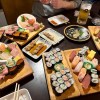 Shinjuku izakaya’s all-you-can-eat-and-drink plan is one of Tokyo’s best secret cheap eats
Shinjuku izakaya’s all-you-can-eat-and-drink plan is one of Tokyo’s best secret cheap eats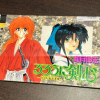 Creator of Rurouni Kenshin manga/anime avoids jail time in child pornography possession case
Creator of Rurouni Kenshin manga/anime avoids jail time in child pornography possession case Hello, cosmetics! Clinique teams up with Hello Kitty this summer for first-time collaboration
Hello, cosmetics! Clinique teams up with Hello Kitty this summer for first-time collaboration “The most Delicious Cup Noodle in history” – Japan’s French Cup Noodle wins our heart【Taste test】
“The most Delicious Cup Noodle in history” – Japan’s French Cup Noodle wins our heart【Taste test】 Starbucks releases a cute Frappuccino and Unicorn Cake…but not in Japan
Starbucks releases a cute Frappuccino and Unicorn Cake…but not in Japan Kyoto Tower mascot termination reveals dark side behind cute Japanese characters
Kyoto Tower mascot termination reveals dark side behind cute Japanese characters McDonald’s Japan’s Soft Twist Tower: A phantom ice cream only sold at select branches
McDonald’s Japan’s Soft Twist Tower: A phantom ice cream only sold at select branches Yabai Ramen: What makes this Japanese ramen so dangerous?
Yabai Ramen: What makes this Japanese ramen so dangerous? Finally! Nintendo Japan expands Switch 8-bit controller sales to everybody, Online member or not
Finally! Nintendo Japan expands Switch 8-bit controller sales to everybody, Online member or not Japanese government wants to build luxury resorts in all national parks for foreign tourists
Japanese government wants to build luxury resorts in all national parks for foreign tourists To combat declining birth rate, Japan to begin offering “Breeding Visas” to foreigners
To combat declining birth rate, Japan to begin offering “Breeding Visas” to foreigners 10 things you should buy at 7-Eleven in Japan
10 things you should buy at 7-Eleven in Japan Studio Ghibli releases anime heroine cosplay dresses that are super comfy to wear
Studio Ghibli releases anime heroine cosplay dresses that are super comfy to wear Woman charged for driving suitcase without a license in Osaka
Woman charged for driving suitcase without a license in Osaka Studio Ghibli unveils My Neighbour Totoro miniature house model
Studio Ghibli unveils My Neighbour Totoro miniature house model Kyoto experiencing problems with foreign tourists not paying for bus fares, but not on purpose
Kyoto experiencing problems with foreign tourists not paying for bus fares, but not on purpose Fighting mild hunger with a Japanese soda that turns into jelly in the stomach【Taste test】
Fighting mild hunger with a Japanese soda that turns into jelly in the stomach【Taste test】 Studio Ghibli’s Howl’s Moving Castle tapestry unveiled in Japan for first time
Studio Ghibli’s Howl’s Moving Castle tapestry unveiled in Japan for first time McDonald’s new Happy Meals offer up cute and practical Sanrio lifestyle goods
McDonald’s new Happy Meals offer up cute and practical Sanrio lifestyle goods Sales of Japan’s most convenient train ticket/shopping payment cards suspended indefinitely
Sales of Japan’s most convenient train ticket/shopping payment cards suspended indefinitely Sold-out Studio Ghibli desktop humidifiers are back so Totoro can help you through the dry season
Sold-out Studio Ghibli desktop humidifiers are back so Totoro can help you through the dry season Japanese government to make first change to romanization spelling rules since the 1950s
Japanese government to make first change to romanization spelling rules since the 1950s Foreigner’s request for help in Tokyo makes us sad for the state of society
Foreigner’s request for help in Tokyo makes us sad for the state of society Ghibli founders Toshio Suzuki and Hayao Miyazaki contribute to Japanese whisky Totoro label design
Ghibli founders Toshio Suzuki and Hayao Miyazaki contribute to Japanese whisky Totoro label design Doraemon found buried at sea as scene from 1993 anime becomes real life【Photos】
Doraemon found buried at sea as scene from 1993 anime becomes real life【Photos】 Tokyo’s most famous Starbucks is closed
Tokyo’s most famous Starbucks is closed Princesses, fruits, and blacksmiths: Study reveals the 30 most unusual family names in Japan
Princesses, fruits, and blacksmiths: Study reveals the 30 most unusual family names in Japan This hotel has one of the coolest katana collections in Japan, and admission is totally free【Pics】
This hotel has one of the coolest katana collections in Japan, and admission is totally free【Pics】 Demon-slaying Dojigiri, one of Japan’s Five Swords Under Heaven, now on display at Kasuga Shrine
Demon-slaying Dojigiri, one of Japan’s Five Swords Under Heaven, now on display at Kasuga Shrine Genuine Muramasa blade and Muromachi katana on display at Tokyo’s Touken Ranbu store【Photos】
Genuine Muramasa blade and Muromachi katana on display at Tokyo’s Touken Ranbu store【Photos】 Rurouni Kitty! Sanrio’s beloved cat cosplays as anime’s iconic swordsman in plushie form
Rurouni Kitty! Sanrio’s beloved cat cosplays as anime’s iconic swordsman in plushie form Rurouni Kenshin trailer has rocking theme, gorgeous sets, dudes trying to stab each other
Rurouni Kenshin trailer has rocking theme, gorgeous sets, dudes trying to stab each other Japanese city offering authentic handcrafted swords in exchange for “tax” payments
Japanese city offering authentic handcrafted swords in exchange for “tax” payments Japan’s legendary Brother Katana might not be brothers after all? Investigating the mystery【Pics】
Japan’s legendary Brother Katana might not be brothers after all? Investigating the mystery【Pics】 Dojigiri, the millennium-old katana said to have slain a demon, is now on display in Tokyo【Pics】
Dojigiri, the millennium-old katana said to have slain a demon, is now on display in Tokyo【Pics】 Rurouni Kenshin mobile game announced for release this spring alongside new series arc
Rurouni Kenshin mobile game announced for release this spring alongside new series arc Final Fantasy artist Yoshitaka Amano anthropomorphizes katana made from a meteorite
Final Fantasy artist Yoshitaka Amano anthropomorphizes katana made from a meteorite Legendary crescent moon katana, one of Japan’s Five Swords Under Heaven, now on display in Tokyo
Legendary crescent moon katana, one of Japan’s Five Swords Under Heaven, now on display in Tokyo Change your perspective: A quartet of videos from little-known Japan
Change your perspective: A quartet of videos from little-known Japan Katana of four of Japan’s greatest samurai turned into gorgeous scissors
Katana of four of Japan’s greatest samurai turned into gorgeous scissors Japanese samurai sword ice cream crafted by master swordsmith from famous katana town of Seki
Japanese samurai sword ice cream crafted by master swordsmith from famous katana town of Seki Godzilla Stomps Into Universal Studios Japan for New Attraction in 2017
Godzilla Stomps Into Universal Studios Japan for New Attraction in 2017 Sword of one of Japan’s last samurai discovered in house in America
Sword of one of Japan’s last samurai discovered in house in America
Leave a Reply